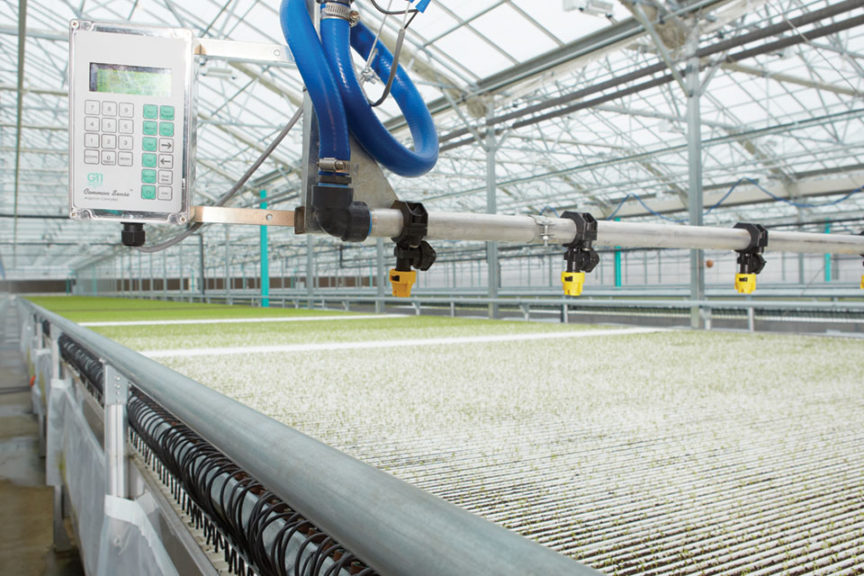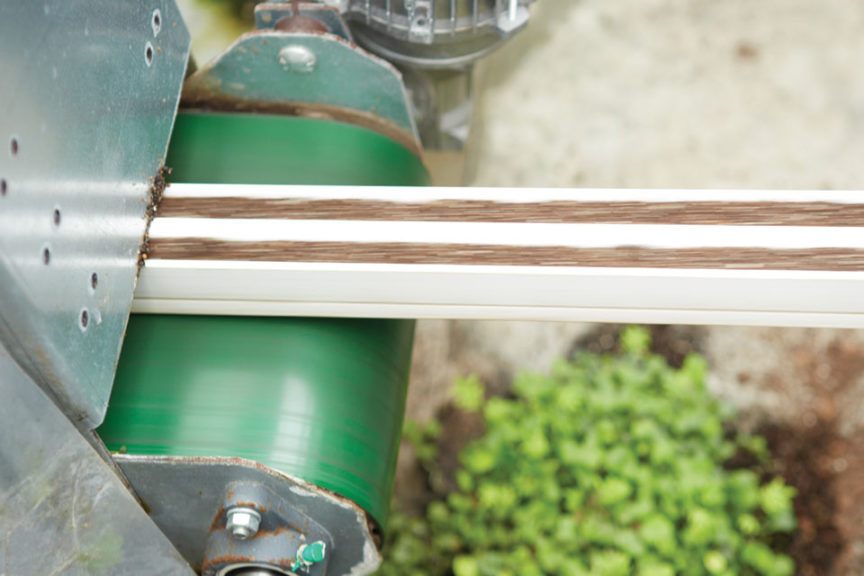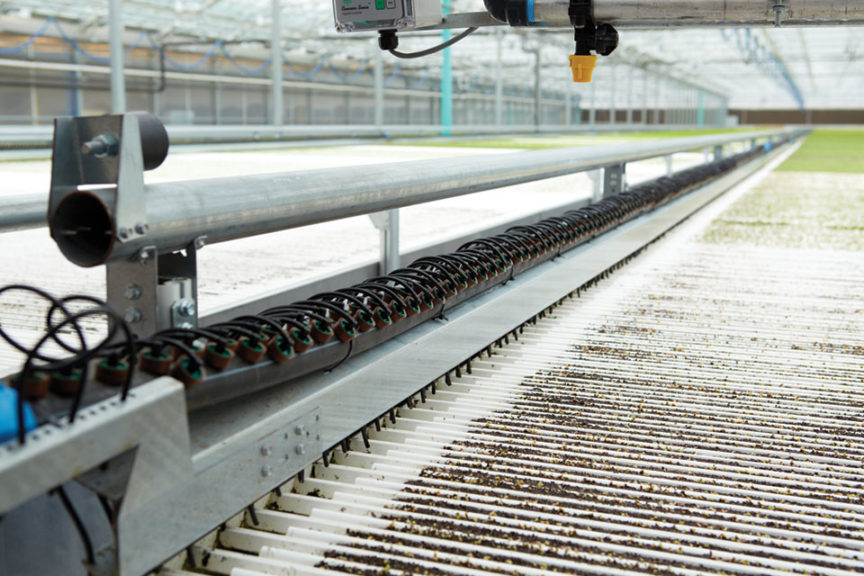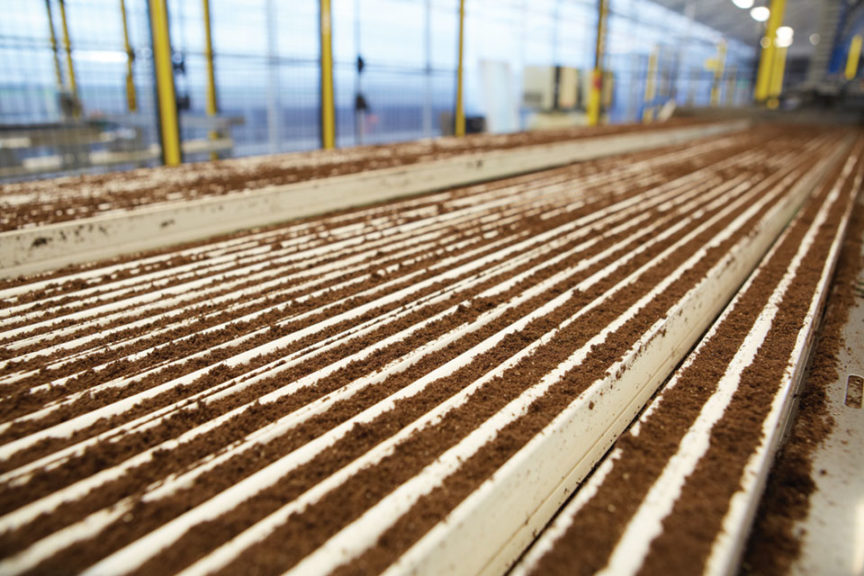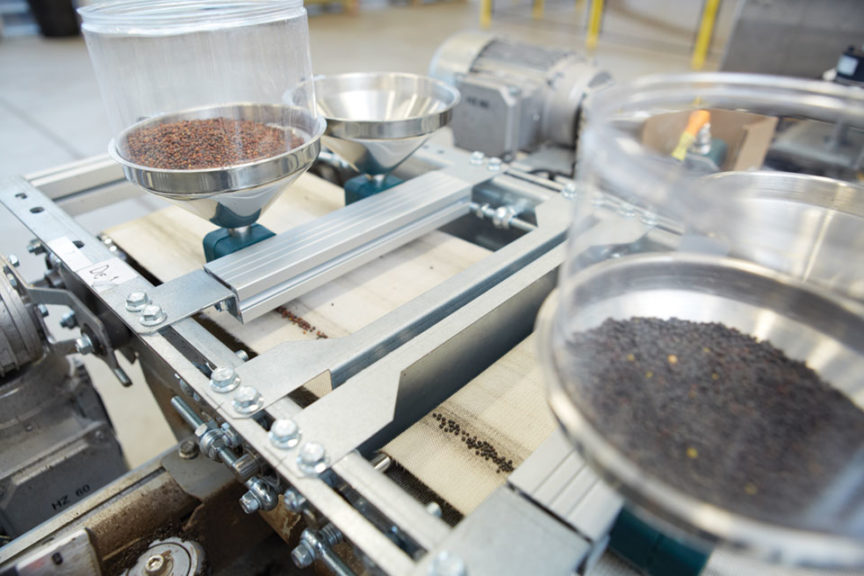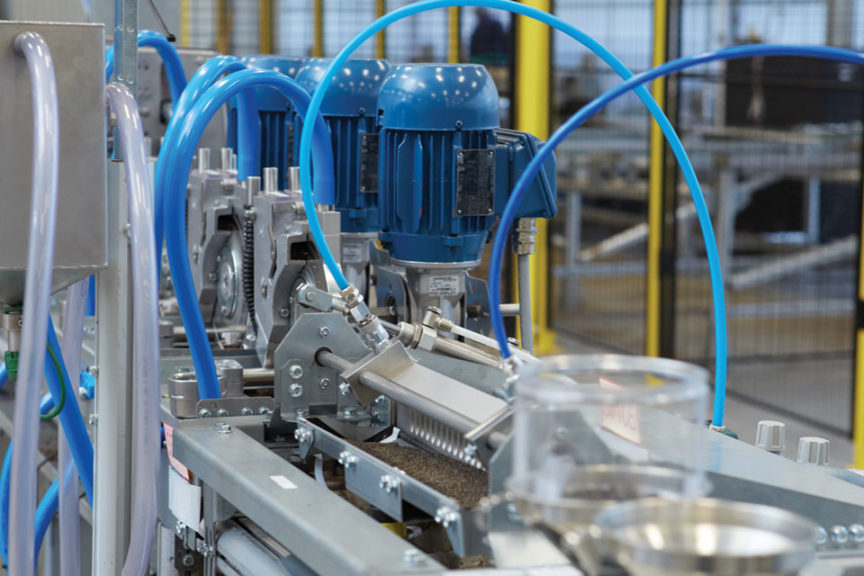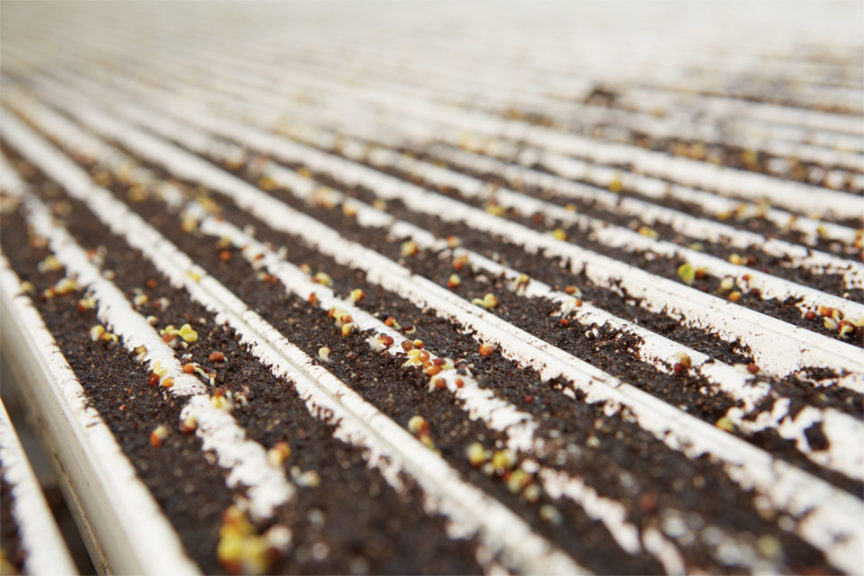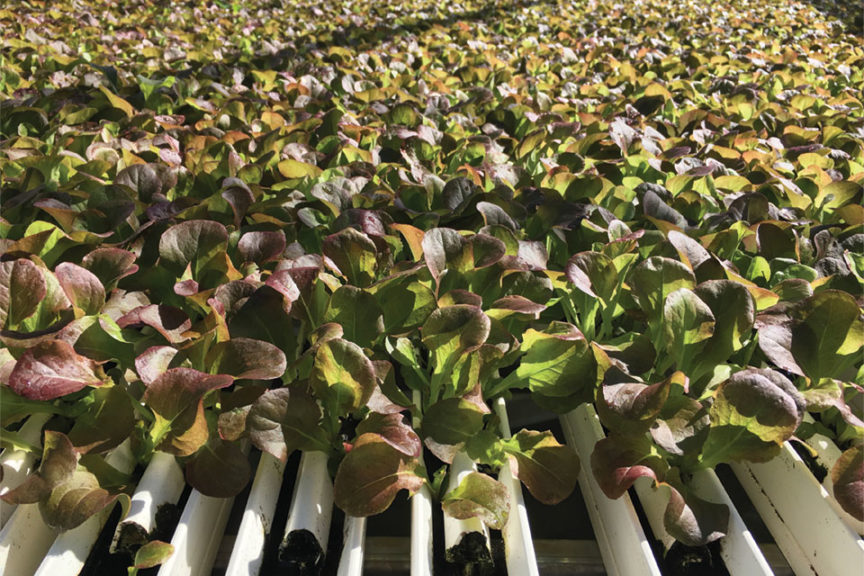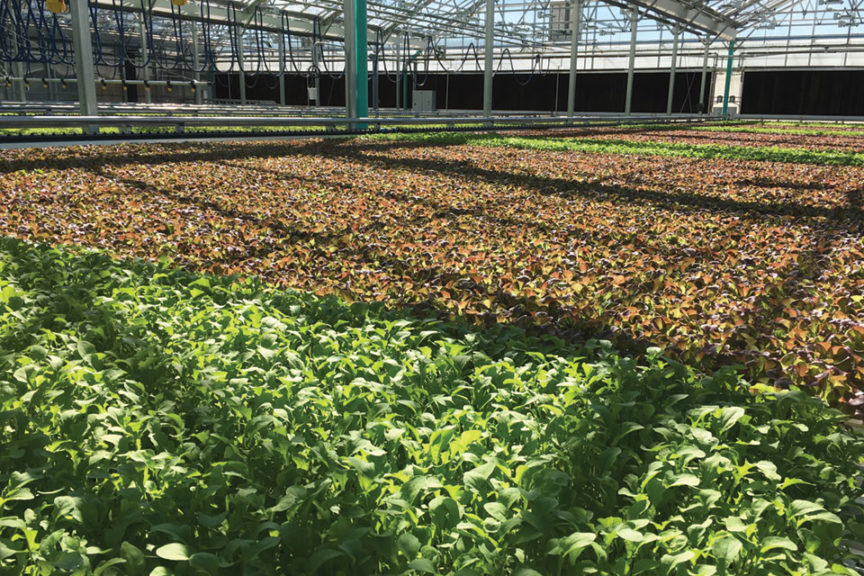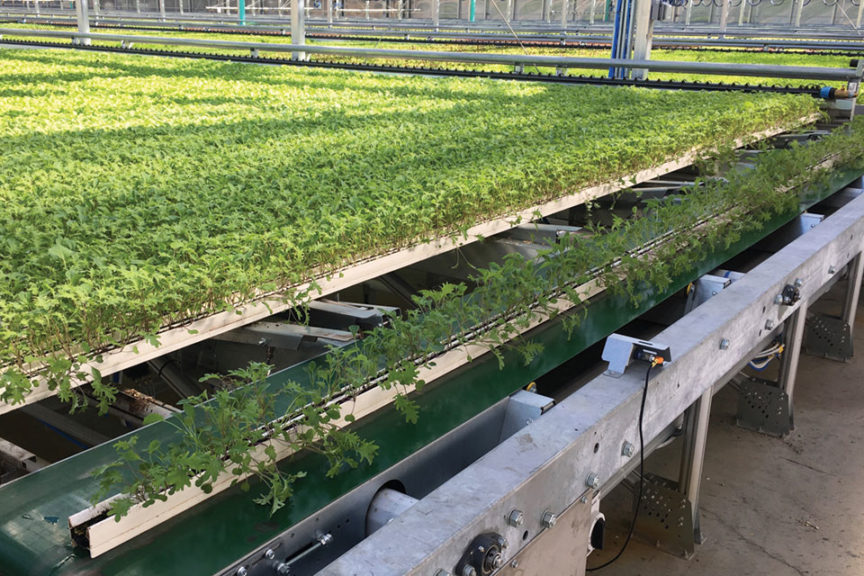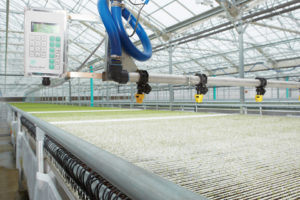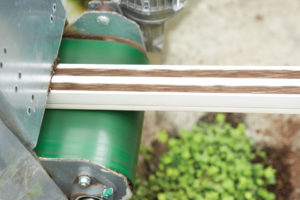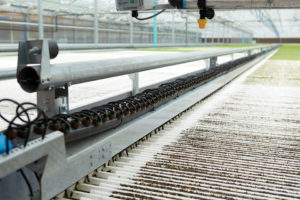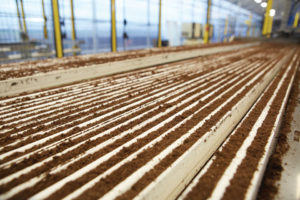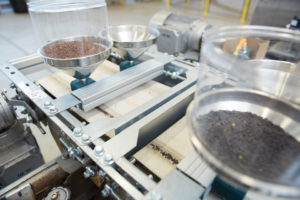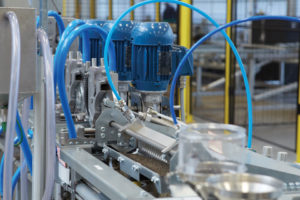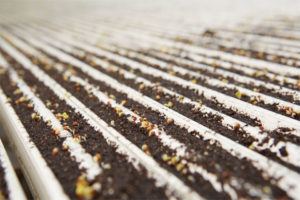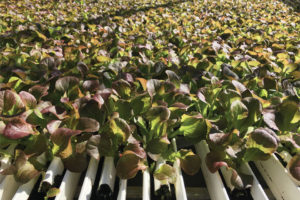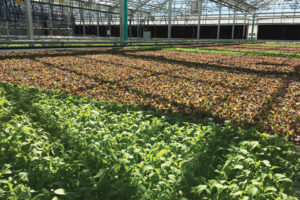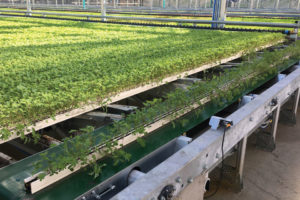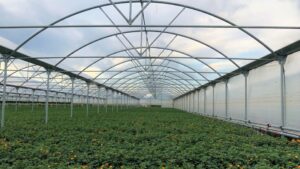Greens Production Goes High-Tech at lēf Farms
Production of baby leaf lettuce in a greenhouse often requires very specific and advanced technology. lēf Farms learned this very quickly when it set up shop in Loudon, NH, in the Fall of 2016.
While searching the globe for the best automation system that could handle its unique production needs, the company found what it was looking for from Green Automation, a Finland-based company that had developed two growing systems; the Living Lettuce System for growing lettuce heads, living lettuces and larger herbs; and the Baby Leaf Lettuce System for growing baby leaf plants such as leaf lettuce, pac choi mustard green, red and green kale, and arugula.
Customization Based on Grower Needs
According to Patrik J. Borenius, CEO of Green Automation Americas LLC, the two systems are designed to maximize efficiency in leafy greens production by using every inch of space for growing, bringing in high yields per square foot using a gutter system. The Green Automation systems can be automated from medium filling and seeding to harvesting and packaging. The growing lettuce is moved automatically through the greenhouse with both systems. The main differences lie in gutter widths, the seeding, and the transplanting process.
The systems both address the three major challenges for indoor farming: energy efficiency, space efficiency, and labor efficiency.
“We start with our suggested set-up that we feel is the most cost-effective way of using the system, and from there we can adjust it to meet almost any greenhouse or facility shape and size,” Borenius says. “We manufacture all the channels, so the length, quality, and dimensions of the gutter are completely custom made. If someone asks us what they should do, we tell them what we think makes the most sense for them and design it that way.”
It’s possible to have different specified lines in the same greenhouse for different crops, like lettuce, arugula, or basil, Borenius says.
“The Baby Leaf Lettuce System uses an open gutter, and you can decide how much spacing is needed when seeding and control it via a touch screen. It’s all determined by how tall and fast you want to grow something.”
The biggest benefits of these systems, according to Borenius, is the chance to operate a facility with a small number of people.
“The fully automatic Baby Lettuce System is a closed loop, and nothing is done manually,” Borenius says. “Growers can run 2 acres with as few as four people: a supervisor who might also operate the seeder, one worker at the tail end for removal and cleaning, and one or two people at the mixing and harvesting stage.”
The Living Lettuce System can work with a lower level of automation. In its simplest form, plants start in a germination chamber and are manually moved to a moving plan-table for about a week, and then transplanted into the gutter system in the greenhouse.
“In this form, the gutters stay in the greenhouse the entire time, and the gutters are moved back to the transplanting area at the end of the day,” Borenius says. “The moving of the lettuce out of the greenhouse is the only thing done on a conveyor belt.”
But the Living Lettuce System can also be upgraded with conveyor belts for fully automatic movements of the gutters as well as adding optional automatic transplanters.
Learn more about the two systems, and check out videos that highlight how each of them work, at GreenAutomation.com.
How lēf Farms Made It Work
lēf Farms presented Green Automation with a unique challenge. The Baby Leaf System is designed to use rock wool as a growing medium, but Bob LaDue, Vice President and COO of lēf Farms, says in his experience, baby greens and seedlings perform best in a peat-based system.
After a lot of back-and-forth discussion, the two sides came up with a solution that involved running the peat through two furrows and applying seeds through a gutter system. lēf Farms tested this approach, and the results were promising.
“By using a peat growing medium, we are able to use standardized 120-cubic-foot peat bales,” LaDue says. “We buy the bales by the truckload, and one bale lasts four or five days. We were able to keep the other handling equipment standard, which was a benefit. The high-turn system helps keep input costs low, and there’s less effort for the worker.”




